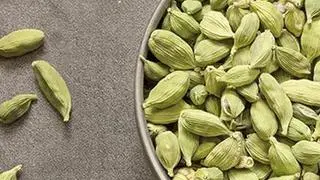With temples closed for months and no-frill marriage ceremonies becoming a norm in the midst of the Covid-19 pandemic, marigold cultivation in the country has gone down by about 60-70 per cent. The demand for other flowers such as roses, chrysanthemums, gerbera, lilies, etc has also dipped in the market pushing the floriculture industry into a deep crisis.
“The floriculture industry is functioning to 20-25 per cent of its capacity. The traditional open field cultivation of flowers has suffered heavily and at the same time players in protected cultivation (poly and greenhouse) are fighting for survival. An estimated 3,000-acre land across India is under protected flower cultivation which grows three main flowers - rose, gerbera and carnation. These flowers are in demand for marriage ceremonies, functions and festivals. But in the last four the demand is at standstill,” said Praveen Sharma, President of Indian Society of Floriculture Professionals (ISFP).
Cyclone, then Covid
He added that cultivators of protected flowers get a revenue of ₹10,000 per day per acre and now the revenue has dropped 15-20 per cent. “Now, many cultivators have completely crashed down. The Nisraga cyclone had already damaged flower cultivation and Covid-19 has pushed us into a deep crisis. Flowers are not essential commodities and hence the trade was at halt during lockdowns. Many farmers and traders are now living hand to mouth,” said Sharma.
According to the Agricultural and Processed Food Products Export Development Authority (APEDA), floriculture is one of the important commercial trades in agriculture and is being viewed as a high growth industry. Commercial floriculture has emerged as a hi-tech activity under controlled climatic conditions inside the greenhouse. It has a higher potential per unit area than most of the field crops and is a lucrative business.
“Players in the seed industry have reported 60-70 per cent drop in marigold cultivation. The demand for jasmine and roses by the perfume industry has been stable. Transportation and logistics have been major concerns for floriculture industry during lockdowns,” said Indra Shekhar Singh, Director-Policy and Outreach, National Seed Association of India (NSAI).
Export of cut flowers
Indian floriculture industry has been shifting from traditional flowers to cut flowers for export purposes. The liberalised economy has given an impetus to the Indian entrepreneurs for establishing export-oriented floriculture units under controlled climatic conditions. Such like Maharashtra, Karnataka, Andhra Pradesh , Haryana, Tamil Nadu , Rajasthan and West Bengal are major floriculture centres.
According to industry players, the export of flowers is not as affected as maximum export happened during the peak season of Valentine’s Day. Exporters hope that the situation becomes normal so that exports resume in August when there is demand for flowers in the Japanese market.
The important floricultural crops in the international cut flower trade are rose, carnation, chrysanthemum, gargera, and gladiolus etc. The country has exported 19726.57 MT of floriculture products to the world worth ₹571.38 crore ($81.94 million) in 2018-19.







Comments
Comments have to be in English, and in full sentences. They cannot be abusive or personal. Please abide by our community guidelines for posting your comments.
We have migrated to a new commenting platform. If you are already a registered user of TheHindu Businessline and logged in, you may continue to engage with our articles. If you do not have an account please register and login to post comments. Users can access their older comments by logging into their accounts on Vuukle.